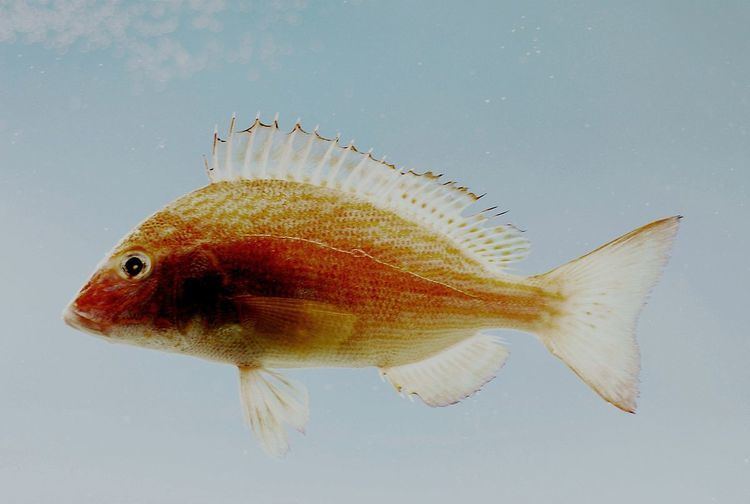Kingdom Animalia Family Haemulidae Genus Orthopristis Order Perciformes | Class Actinopterygii Phylum Chordata Rank Species | |
 | ||
Similar Orthopristis, Conodon nobilis, Perciformes, Red pigfish, Haemulon chrysargyreum | ||
The pigfish (Orthopristis chrysoptera) is a member of the Haemulidae family, members of which are commonly called grunts. This name derives from the grunting or chattering noise these fish make by rubbing their pharyngeal teeth together.
Contents
Description
The pigfish is distinguished from other members of the grunt family by its dorsal fin, which has 12 to 13 spines followed by 15 to 16 soft rays. The anal fin has three spines with 12 to 13 short rays. A scaly sheet covers the dorsal and anal fin spines, while the soft rays lack scales. On the body of the pigfish, above the lateral line there are 53 to 58 pored, lateral scales in ten longitudinal rows, and 15 to 19 rows below. The body color is generally light blue-grey, which fades to silver along the ventral region. Scales are bluish with bronze spots on the edge, which form stripes that are horizontal below the lateral line and curve slightly upward above the line. Fins are mostly yellow-bronze with dusky edges. Adults average 9.1 inches (23 cm), but have been recorded at lengths of up to 14.9 inches.
Distribution and habitat
Pigfish are found along the Atlantic coast of the United States from New York to the northern Bahamas and Bermuda and in the Gulf of Mexico from Florida to the Yucatan Peninsula. Juveniles commonly occur in shallow waters near shore, often near vegetation. Adults are more frequently found in deeper areas over soft bottoms. Pigfish inhabit waters that range in temperature from 56.7 to 96.8 °F (13.7 to 36.0 °C) but are most commonly found at temperatures of 75.0 to 80.0 °F (23.9 to 26.7 °C). They can live in salinities of 0 to 44 ppt, but prefer salinities above 15 ppt.
